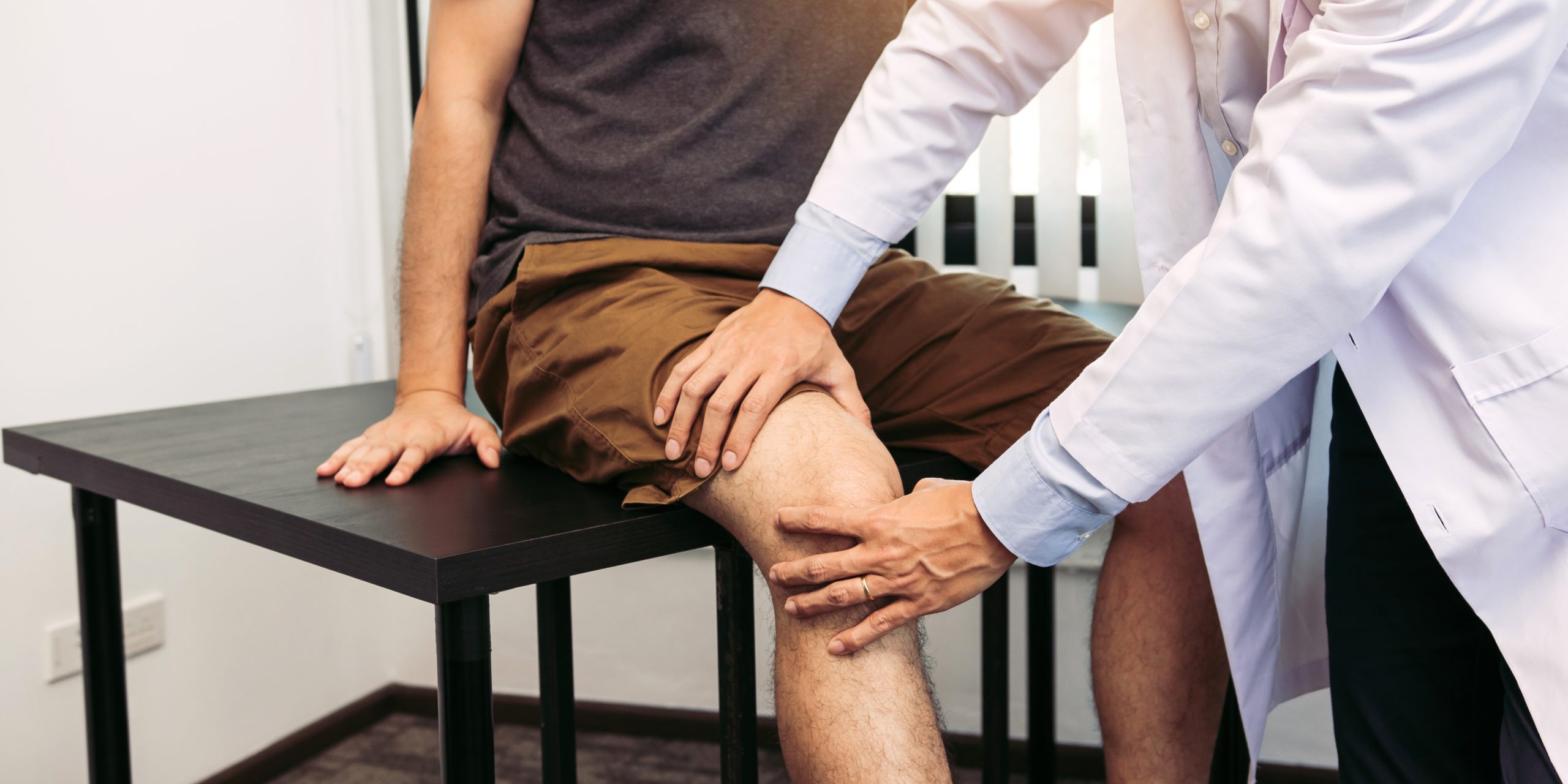RxBlack
ARPwave’s premier therapy device, and is revered within elite athletic communities.
FlexDoctor
Integrates our revolutionary waveform into a portable, handheld device,
offering convenient pain reduction with just the push of a button.

Arthritis is a broad term that refers to a group of more than 100 conditions that cause inflammation, pain, stiffness, and swelling in the joints. It can affect people of all ages and backgrounds caused by the body’s immune system or wear and tear on the joints leading to the breakdown of cartilage—the protective cushioning between bones—resulting in pain, discomfort, and decreased mobility. While arthritis can affect any joint in the body, the knee is particularly vulnerable due to its role in bearing weight and supporting movement. For many individuals with knee arthritis, these symptoms can significantly impact daily life, making it harder to walk, climb stairs, or engage in other routine activities. While traditional treatments like medications, physical therapy, and injections can help manage symptoms, many individuals are seeking non-invasive alternatives that offer more lasting results. ARPwave therapy is one such solution that has been gaining popularity for its ability to provide pain relief, enhance mobility, and promote muscle healing without surgery.
Arthritis in the knee is an inflammation of the joint that leads to pain, stiffness, swelling, and reduced movement. The knee joint consists of bones, cartilage, muscles, ligaments, and tendons, all of which work together to enable smooth motion. When arthritis develops, it typically involves the breakdown of cartilage, the smooth tissue that cushions the bones in the joint. Without this cushioning, the bones begin to rub against each other, resulting in pain and inflammation.
There are several types of arthritis that can affect the knee:
Knee arthritis can present a range of symptoms, and these can vary from person to person. The most common symptoms include:
While there is no silver bullet cure for arthritis, a range of treatments can help manage symptoms and improve quality of life. Some of the most common traditional treatment options include:
Although these treatments can provide temporary relief, many people with knee arthritis are turning to alternative therapies for longer-lasting solutions. ARPwave is one of those solutions and provides a holistic approach to knee health.
ARPwave (Accelerated Recovery Performance) is a cutting-edge neuromuscular treatment that uses electrical impulses to stimulate the muscles and nerves in the body. ARPwave therapy is designed to target deeper tissues, activating muscle fibers and promoting healing at a cellular level. ARPwave therapy is used for pain management, muscle rehabilitation, and enhancing recovery after injury or surgery.
ARPwave therapy is highly effective treatment option delivering a holistic solution for alleviating pain, improving joint function, increasing muscle strength, and restoring mobility.
ARPwave therapy offers several benefits for individuals suffering from knee arthritis:
1. Pain Relief and Inflammation Reduction
ARPwave therapy helps reduce both acute and chronic pain associated with knee arthritis. The electrical impulses stimulate the release of endorphins, the body’s natural pain-relieving chemicals. Additionally, ARPwave increases blood circulation to the affected area, which helps reduce inflammation and promote healing.
2. Improved Muscle Function and Strength
Weak muscles around the knee can exacerbate the symptoms of arthritis by putting additional stress on the joint. ARPwave therapy effectively targets and strengthens the muscles surrounding the knee, such as the quadriceps, hamstrings, and calf muscles. By improving muscle strength, ARPwave helps relieve pressure on the joint, reducing pain and improving overall joint stability.
3. Enhanced Mobility and Flexibility
Many people with knee arthritis experience stiffness and limited mobility, which can make daily activities difficult. ARPwave therapy helps improve joint flexibility by relaxing tight muscles and increasing the range of motion. As the muscles are stimulated and strengthened, patients often report increased mobility and less stiffness, making it easier to perform tasks such as walking, bending, and climbing stairs.
4. Non-invasive and Safe
Unlike surgical options like knee replacement, ARPwave therapy is non-invasive and carries minimal risk. It does not require incisions or long recovery periods, making it an appealing option for individuals who want to avoid surgery or those who are not candidates for surgical procedures.
5. Accelerated Healing and Recovery
ARPwave therapy promotes faster healing by improving circulation, oxygenating tissues, and accelerating the repair of damaged muscles and cartilage. This is particularly important for individuals with knee arthritis who may also have muscle imbalances or weaknesses as a result of altered gait or movement patterns.
During an ARPwave session, electrodes will be placed on the skin around your knee joint. These electrodes deliver low-frequency electrical impulses that stimulate the muscles and tissues in the area. The sensation is not painful, but some patients may feel a mild tingling or contraction in the muscles. Sessions typically last 20 to 30 minutes, and patients may require several sessions to experience the full benefits. The number of treatments will depend on the severity of your knee arthritis and your individual response to therapy.
Knee arthritis is a painful condition that can significantly impact your quality of life, but treatments like ARPwave therapy offer a non-invasive, effective solution for managing pain, improving mobility, and enhancing muscle function. By reducing inflammation, stimulating muscle healing, and promoting joint flexibility, ARPwave therapy can provide significant relief for those suffering from knee arthritis. If you’re looking for an alternative to traditional treatments or surgery, consider discussing ARPwave therapy with your healthcare provider to see if it’s the right option for you. With its ability to accelerate recovery and improve long-term joint health, ARPwave could be the key to getting back on your feet and living pain-free.
Leave your details below and one of our operators will contact you.